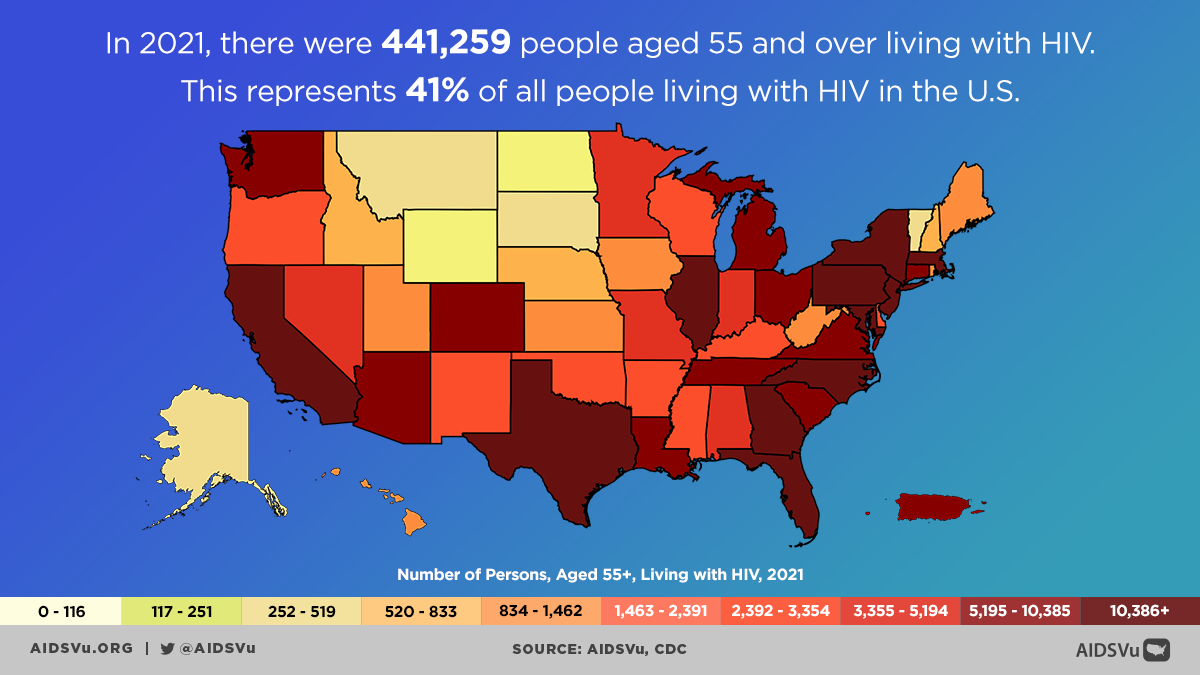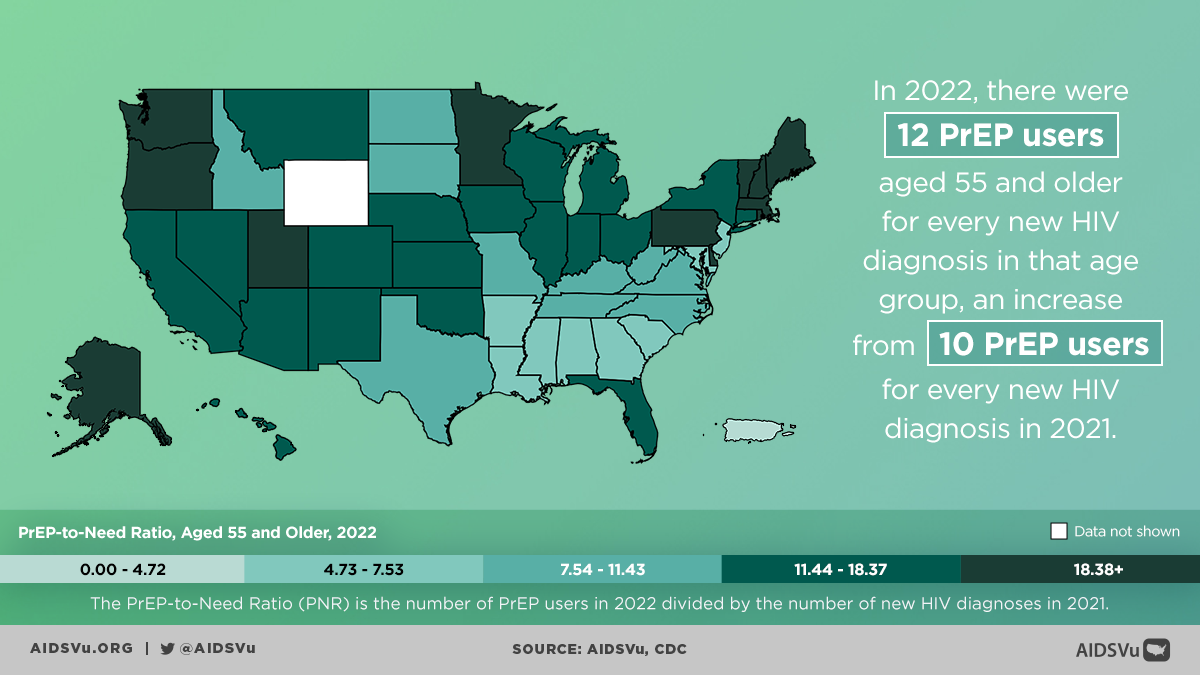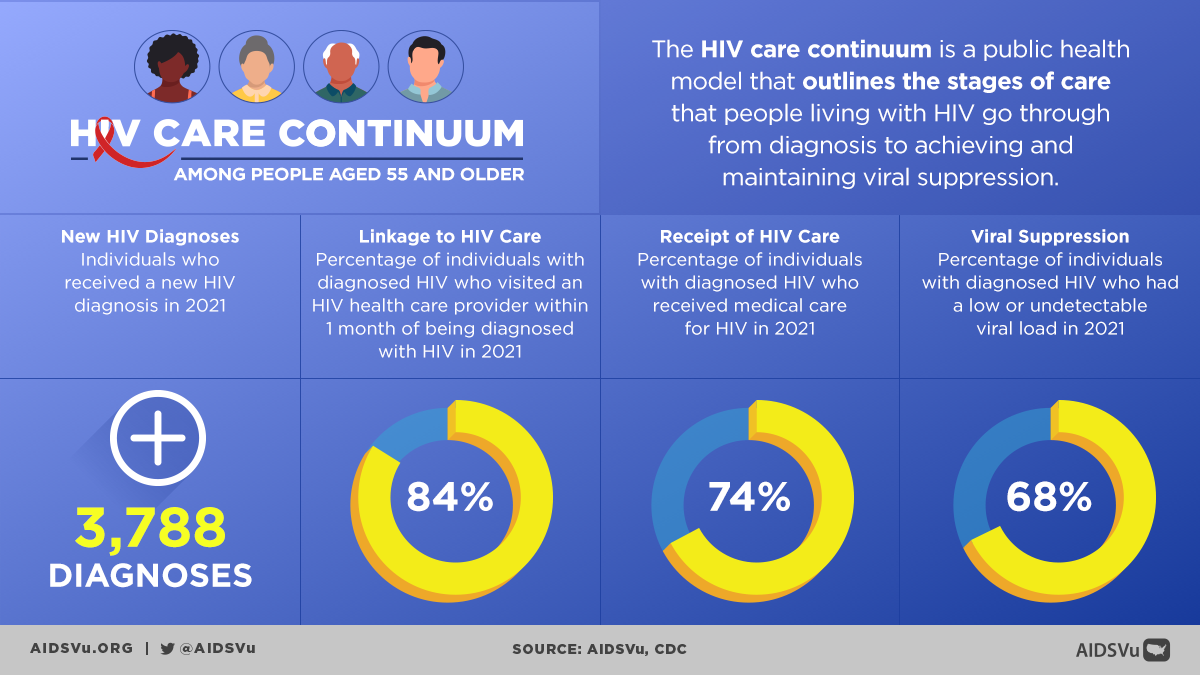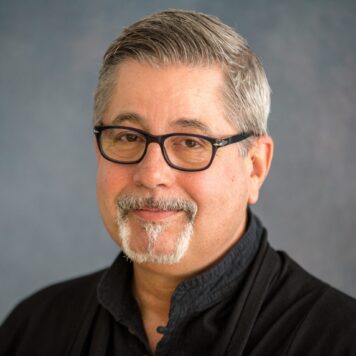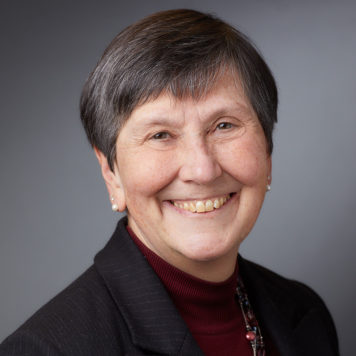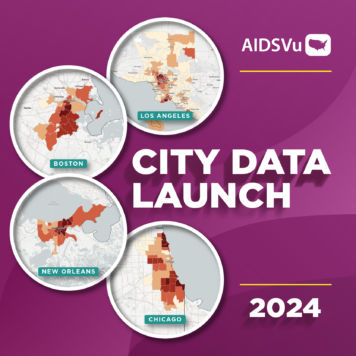On September 18th, AIDSVu recognizes National HIV/AIDS and Aging Awareness Day (NHAAD). Due to the advancements in HIV screening, treatment, and care, those living with HIV are living long, full lives. Older adults living with HIV represent the largest age group of people living with HIV. However, older adults living with HIV also face many health equity challenges. NHAAD is an opportunity each year to bring attention to the growing number of older people living with HIV and their unique health and social needs.
In 2021, there were 441,259 people aged 55 and older living with HIV, representing 41% of the U.S. population living with HIV. In 2021:
- 84% were linked to care;
- 74% received care;
- 68% were virally suppressed – the highest viral suppression rate out of all age groups. However, this still falls short of the Ending the Epidemic (EHE) Initiative’s goal of increasing viral suppression among people with diagnosed HIV to 95% by 2025;
- 34% were diagnosed late, the highest percentage of late diagnoses among all age groups.
From 2021 to 2022, there was a 22% increase in the number of PrEP users in this age group. The PrEP-to-Need Ratio (PNR), which is the number of PrEP users divided by the number of HIV new diagnoses, has also increased, with 12 people aged 55 and older using PrEP for every new HIV diagnosis in 2022 compared to 9.9 PrEP users for every new HIV diagnosis in 2021.
Older adults living with HIV face additional challenges related to treatment given age-related chronic conditions, including cardiovascular disease, lung disease, obesity, and more. Stigma stemming from isolation due to a lack of social support and/or illness may also prevent older individuals from accessing HIV-related health care or disclosing their HIV status.
In addition to aging-related challenges, racial disparities, and social determinants of health such as poverty, insurance status, education, household income, food insecurity, and unemployment can negatively impact HIV-related health outcomes for this age group. For example:
- Black Americans 55 and older had the highest rate of new HIV diagnoses (15 new diagnoses per 100,000 people) compared to other races/ethnicities in the same age group.
- In 2020, Americans 65 and over had a far lower median household income ($50,523) than the national average of $69,021.
- New HIV diagnoses among women are concentrated in older age groups. Women aged 55+ made up 28% of all new HIV diagnoses among people aged 55 older in 2021.

